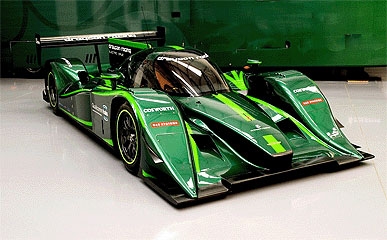One of the problems that engineering has is its relative invisibility. Although, as any reader of The Engineer will appreciate, it pervades every part of our lives, it does so in such a way that people don’t realise it. This is a fundamental part of engineering design, of course — if you notice it, it’s probably gone wrong. Invisible engineering is good engineering.
This is one of the reasons that we cover the motorsport sector so much. It’s probably the most visible, dynamic branch of engineering, with in-your-face technology that’s so much on the cutting edge that it frequently fails — and in front of millions of TV viewers, too. It showcases the problem-solving skills of engineers, it puts critical technology like man-machine interface front and centre, and it represents an aspiration for budding engineers.
That’s not the only reason. The Engineer is a UK magazine, and motorsport has a unique home in the UK. Britain isn’t the birthplace of motorsport — that would be France — and it probably doesn’t have the biggest fanbase here: for motorsport generally, the US has the largest number of fans, and Formula 1 is probably more popular in Italy and Brazil than it is here.
But Britain has a good claim to be the home of motorsport technology. Eight of the 12 Formula 1 teams of the 2012 season are based in the UK; endurance racing, rallying and lower formulas all have bases here. Moreover, it’s an extremely important — and, again, unique — vehicle for technology transfer, mainly but not wholly between the automotive and aerospace sectors.
In our upcoming issue you’ll be able to read two features about how the motorsport industry is working with other sectors, and helping to develop important new technologies with wider applications. In our cover feature, Stephen Harris talks about structural batteries, a new technology which combines energy storage with load-bearing materials and which is part of the Lola-Drayson electric racer. In the interview, I talk to the head of McLaren Advanced Technologies, Geoff McGrath, about how the race team’s expertise in data gathering and handling is being used in healthcare, infrastructure management and the oil and gas sector.

McGrath’s point of view is an interesting one. The motorsport sector is not necessarily a great place to develop intellectual property, he says: a race series such as F1 is about technology optimisation, not development, and regulations often have a damping effect on actual invention. McLaren’s take on transferring technology out of motorsport is to find partners in their target sectors who have knowledge of their markets and how to access them, and then apply their expertise alongside them. In this, as so often on the grid, they may be leading the field.
This isn’t to say that F1 can’t originate technology. The Williams and Renault teams’ flywheel kinetic energy recovery systems are both now on the market for mobile and static energy storage, and technologies such as structural batteries and direct-drive electric motors are being trialled in motorsport before hitting the electric vehicle market. But the motorsport sector needs to find new ways to spread its influence in UK engineering. It’s a unique resource of both visibility and technology, and can be of great benefit to the UK economy, but it needs imagination in business as much as in engineering.










Water Sector Talent Exodus Could Cripple The Sector
Well let´s do a little experiment. My last (10.4.25) half-yearly water/waste water bill from Severn Trent was £98.29. How much does not-for-profit Dŵr...